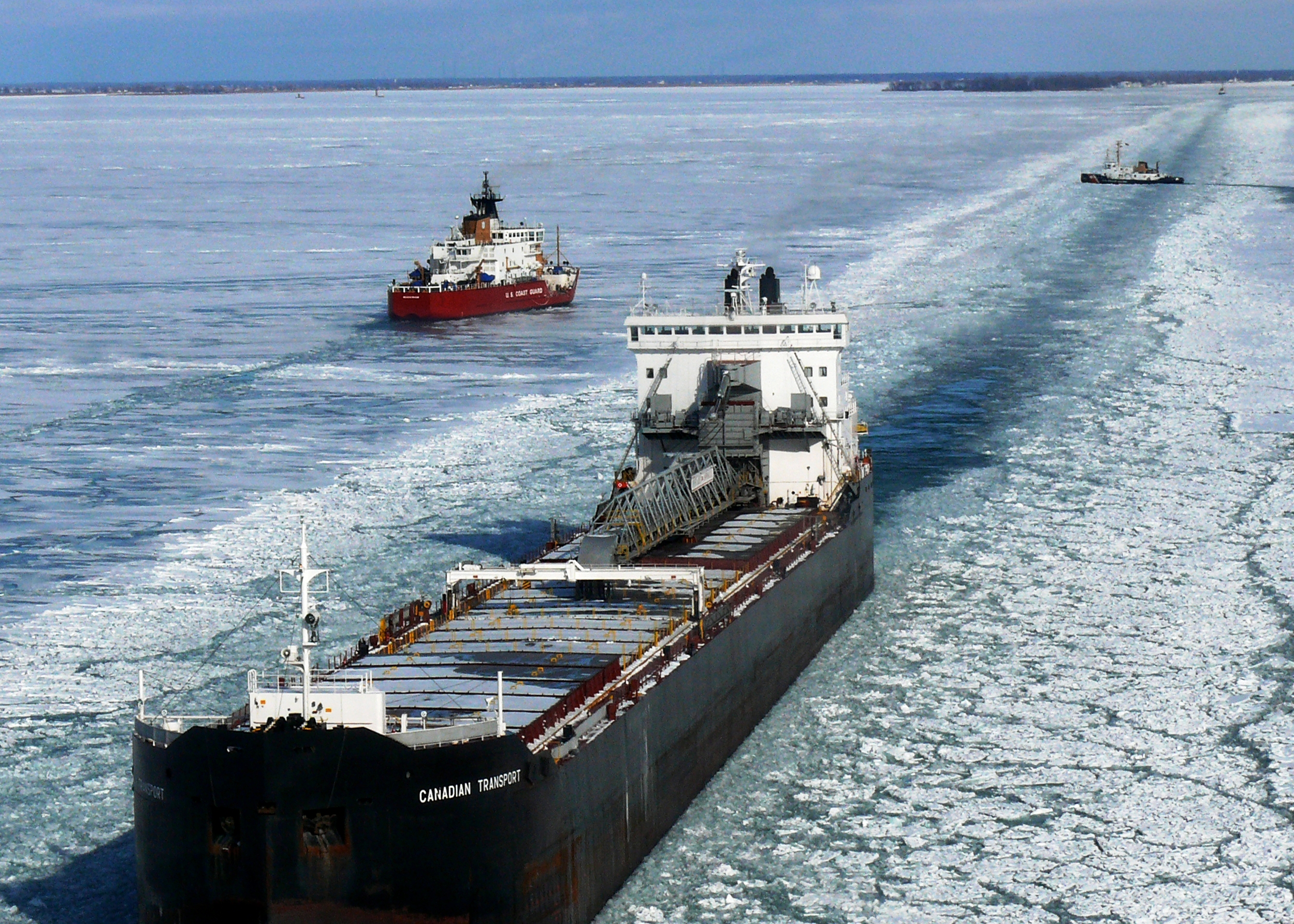Would a Saint Lawrence Seaway model work for Bering Strait shipping?
A joint U.S.-Canadian system supports and simplifies shipping on the Great Lakes. Could it work in the Arctic?

Alaska Sen. Lisa Murkowski has long envisioned rules and regulations for Bering Strait travel modeled after the Saint Lawrence Seaway system, the network of locks, canals and passages that helps connect the Atlantic Ocean to the Great Lakes and is managed cooperatively by the United States and Canada.
A portion of that system, connecting Montreal to Lake Erie, includes 13 Canadian and 2 U.S. locks at which tolls are collected to help fund the facilities. It is an important example of international cooperation and commerce that has worked well for both nations and private industry for six decades. More than 2.5 billion metric tons of cargo has been moved over the past half-century.
The waters between Alaska and Russia may not see the same levels of ship traffic as the Saint Lawrence Seaway any time soon, but climate change is expected to lead to a boom in commercial shipping in the Arctic. Ice free summers could become normal in a decade or two if temperatures rise with the continued increase in greenhouse gases in the atmosphere.
Shipping through the Arctic could become attractive to many nations and companies because it would reduce the shipping distance by 40 percent from Europe to Asia compared with some other routes.
“When you can figure out a quicker way to get from Asia to Europe, when you can shave off days, when you can use less fuel — you are saving money,” Murkowski said in late 2018. “From a trade perspective, this is hugely significant.”
At present, there is no structure in place to provide the wide range of services and facilities that are going to be needed in the Bering Strait to ensure safe operations — shipping routes, icebreaker services, ports, spill prevention equipment, etc.
That’s where the Murkowski plan for an Arctic seaway development corporation comes in.
Alaska’s senior senator has introduced a measure to mandate creation of a company aimed at “uniting Arctic nations in a cooperative Arctic shipping union, where voluntary collective maritime shipping fees will help fund the infrastructural and environmental demands of safe and reliable shipping in the region.”
Private and government shippers would never pay voluntary tolls unless they get something valuable in return. So there is a sales job that has to be faced.
The theoretical return in this case would be that to be eligible to use and rely on the services of the seaway corporation, the shippers would have to pay the tolls. And entities that would provide insurance would probably insist that those services be available to companies for which they write policies, meaning that the shippers would “voluntarily” pay the tolls.
Whether that would work in practice remains to be seen. It’s clear that services will be required and paying a fee to get access to those services doesn’t raise the legal or political nightmares that would come with any effort to make tolls mandatory.
Murkowski’s bill says that the Saint Lawrence system is a “precedent for cooperative infrastructure investment” and “offers ship operators a coordinated suite of services, similar to what is needed in the Arctic Ocean and its approaches.”
While the Russian Northern Sea Route Administration charges escort fees for cargo ships as high as $500,000, the United States needs a management agency to deal with investment in the transportation system.
The U.S. corporation would be asked to build ports, provide icebreakers, manage traffic and encourage the development of the route, her bill says. It would have the power to issue revenue bonds, which would be paid by tolls collected from shippers.
The company could lease icebreakers from other nations or private companies, avoiding the long delays associated with getting ships approved for the Coast Guard.
While the measure to require the creation of a seaway corporation may not win approval by Congress this year, Murkowski is also pushing for an interim step in that direction that would move the debate along and expand the number of people focusing on this challenge.
The Arctic Shipping Federal Advisory Committee Act, which has been approved by the commerce committee, includes a provision mandating a study of the idea.
The new 15-member advisory committee would be asked to “develop recommendations for establishing such a corporation and a detailed implementation plan for establishing such an entity; or if the advisory committee decides against establishing such a corporation, provide a written explanation as to the rationale for the decision and develop an alternative.”
Among other tasks, the committee would also develop rules about voluntary tolls as a financing mechanism. The time to act on this is now, Murkowski said in December, as other nations are not waiting until the ice is gone.
“Warming temperatures and diminishing sea ice are opening up shipping routes and changing the scope of the Arctic. It’s imperative that we are not left behind as nations such as Russia, China, and many more are taking interest in the region. As an Arctic nation, the U.S. must maintain its leadership role in this area of global importance,” Murkowski said.
Dermot Cole can be reached at [email protected].